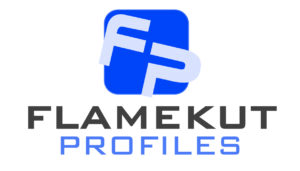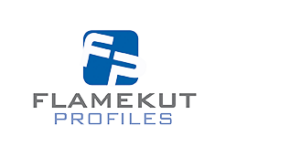How thick can flame cutting work?
Flame cutting, also known as oxy-fuel cutting, involves the use of a combination of oxygen and a fuel gas, typically acetylene, propane, or natural gas. The process relies on the controlled combustion of the fuel gas in the presence of oxygen, creating a high-temperature flame that melts the material being cut. The molten metal is then blown away by a stream of oxygen, resulting in a clean and precise cut.
But, there must come a point where the thickness of material is just too thick for the flame to cut through. At which point is that? In this article we shed light on the subject of the thickness of material that can be flame cut and the differences between them.
To understand the limitations of flame cutting thickness, it’s crucial to grasp the fundamental mechanism behind the process. The intense heat generated by the flame initiates the oxidation of the material, forming metal oxide. This oxide is then blown away by the forceful stream of oxygen, creating a cut through the material.
The critical factor here is the melting point of the material. Flame cutting is most effective on ferrous metals, such as steel, where the metal oxide formed has a lower melting point than the base metal. However, when it comes to non-ferrous materials like aluminum or copper, the process becomes less efficient as the melting points are closer, requiring additional energy to achieve a clean cut.
Factors For Flame cutting thickness
Several factors play a role in determining the maximum thickness that flame cutting can effectively handle:
Material Type:
Ferrous metals, especially carbon steel, are ideal candidates for flame cutting due to the significant temperature difference between their melting points and the melting points of their oxides. Non-ferrous metals, on the other hand, pose challenges due to their closer melting points.
Material Thickness:
As a general rule, flame cutting is most effective on materials with a thickness ranging from 6 mm to 300 mm. Beyond this range, the process becomes less efficient, and alternative cutting methods may be considered.
Fuel Gas:
The choice of fuel gas influences the flame temperature, which in turn affects the cutting capability. Acetylene, with its high flame temperature, is often preferred for thicker materials, providing better results than other fuel gases.
Oxygen Purity:
The purity of the oxygen used in the cutting process is crucial. Higher oxygen purity results in a more efficient combustion process, contributing to better cutting performance.
Cutting Speed:
Adjusting the cutting speed is a balancing act. Too slow, and excessive heat may lead to rough cuts and increased material loss. Too fast, and the cut may not penetrate the material effectively.
Case Studies:
To illustrate the practical limitations of flame cutting, let’s examine a couple of case studies:
Case Study 1: Carbon Steel Plate (Thickness: 50 mm):
In this scenario, flame cutting is well-suited for a carbon steel plate with a thickness of 50 mm. The temperature generated by the flame is sufficient to create a clean cut, and the molten metal is efficiently blown away.
Case Study 2: Aluminum Sheet (Thickness: 20 mm):
When dealing with non-ferrous metals like aluminum, flame cutting becomes less efficient due to the closer melting points. While it may be feasible for thinner sheets, a thickness of 20 mm might present challenges, leading to a less precise cut.
Advanced Techniques and Technologies:
Innovation in cutting technologies has pushed the boundaries of flame cutting thickness. High-definition plasma cutting and laser cutting have emerged as alternatives for thicker materials, offering greater precision and efficiency. However, these methods often come with higher equipment costs and operational expenses.
Conclusion
Flame cutting, with its long-standing history and widespread use, remains a formidable method for slicing through various materials. While its effectiveness is undeniable within a specific thickness range, it’s essential to acknowledge the practical limitations imposed by material type, thickness, and other influencing factors.
As technology continues to evolve, the landscape of cutting processes is undergoing constant transformation. While flame cutting has its limits, it still holds a valuable place in the manufacturing and fabrication industries, especially for applications where cost-effectiveness and simplicity are paramount.
In conclusion, the question of how thick flame cutting can work is nuanced and dependent on several variables. By understanding the principles, limitations, and advancements in the field, we can continue to harness the power of flame cutting while exploring new frontiers in the world of material processing.

